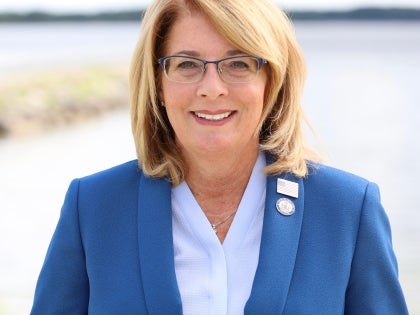
Helping Our Rural Communities Lead Healthy Lives
Senator Pam Helming
November 27, 2018
-
ISSUE:
- Rural Healthcare
Last Thursday, November 15, we celebrated Rural Health Day, when we recognize the hardworking health care professionals in our local communities. As State Senator, I was proud to join the Wayne County Rural Health Network and Newark-Wayne Community Hospital and thank them and other local organizations for all that they do to support the success of our region.
Our rural health care providers work hard every day to ensure that local residents can lead healthy lifestyles and get the care they need. Their work is especially important because people in rural areas face unique struggles when trying to access health care. Because of these challenges, and as Senate Chair on the Legislative Commission on Rural Resources, I have worked hard to support a number of initiatives in the past year that specifically address these issues.
Many rural communities rely on Rural Health Networks (RHNs), which are partnerships among rural health providers, hospitals, municipalities, public health agencies, consumers, mental health professionals, and more. They work together to identify community needs and provide important linkages to health resources. This year, I worked hard to restore and increase funding for the 32 RHNs across the state by 15 percent for a total of $14.88 million. Our region is served by Wayne County Rural Health Network, Common Ground Health, Finger Lakes Community Health, and Cayuga Community Health Network Inc. It is crucial that we continue to provide RHNs with the resources that they need in order to enhance health care opportunities for local residents.
Another obstacle facing rural health care is a shortage in medical professionals. Iroquois Healthcare Association’s Take a Look tours seek to address this issue by providing organized, informational tours of rural areas for medical professionals, including physicians, physician assistants, and nurse practitioners. These three-day tours expose participants to rural communities and hospitals, with the hope that they will ultimately consider relocation and permanent practice in these areas. I am excited to share that funding for this program was increased by $50,000 for a total of $150,000 this year.
Rural communities often also rely on Critical Access Hospitals, which provide outpatient, emergency, and inpatient health care services in the most rural areas of the state. This year, my Senate colleagues and I achieved increased reimbursement funding for critical access hospitals. Moving forward, it will be important to address the reimbursement rate for these hospitals, as it is extremely expensive for these hospitals to provide for small populations and remain financially viable.
Telehealth is an emerging option for many of our rural communities, and I continue to follow the implementation of the telehealth law that passed in 2015. This law allows providers who serve patients via telehealth to be reimbursed by Medicaid and also requires private insurers to make similar reimbursements. Utilizing telehealth is a critical part of our rural health care system, especially in expanding access to specialists and also opening access to mental health services.
There is always more to be done, and this coming year, I look forward to expanding on these programs and supporting others to provide our rural communities with the help they need to provide access to health care.



